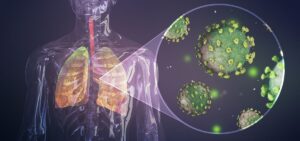Researchers at the University of Warwick (UK) have studied the impact of high respiratory efforts on the lungs of patients suffering from acute respiratory failure due to COVID-19 and have evaluated the likelihood of lung injury.
Although mechanical ventilation is a life-saving intervention, the potential of mechanical ventilators to further damage already diseased lungs through the application of excessive pressures and forces is now well recognized among intensive care clinicians, who implement specific protocols to minimize the risk of so-called ventilator-induced lung injury .
The so-called self-inflicted lung injury by the patient is a controversial concept in the intensive care community, as some clinicians insist that there is no evidence for its existence, while others argue that patients should, if necessary, be put on ventilators mechanics to avoid it.

There is a debate about the possibility that increased respiratory effort generates self-inflicted lung injury by the patient in those spontaneously breathing with acute hypoxemic COVID-19 respiratory failure, although direct clinical evidence linking increased inspiratory effort with injury pulmonary are rare.
COMPUTATIONAL SIMULATOR OF CARDIOPULMONARY PATHOPHYSIOLOGY
In their study, published in the journal Annals of Intensive Care , the researchers adapted a computational cardiopulmonary pathophysiology simulator to quantify the mechanical forces that could cause self-inflicted lung injury to the patient, at different levels of respiratory effort. The simulator was configured to represent a population of 10 COVID-19 patients, treated with supplemental oxygen.
For each of these patients, simulations were tested across a range of tidal volumes (depth of breath) and respiratory rates , from a tidal volume of 7 ml / kg and a respiratory rate of 14 breaths per minute (representing one breath normal), up to a tidal volume of 10 ml / kg and a respiratory rate of 30 breaths per minute (representing a high respiratory effort).
The results of the simulations indicated that potentially damaging pressures and strains could be generated at the levels of respiratory effort that clinicians frequently see in COVID-19 patients.
Fuente: Consalud
 Blog de Fisioterapia Fisioterapia
Blog de Fisioterapia Fisioterapia



